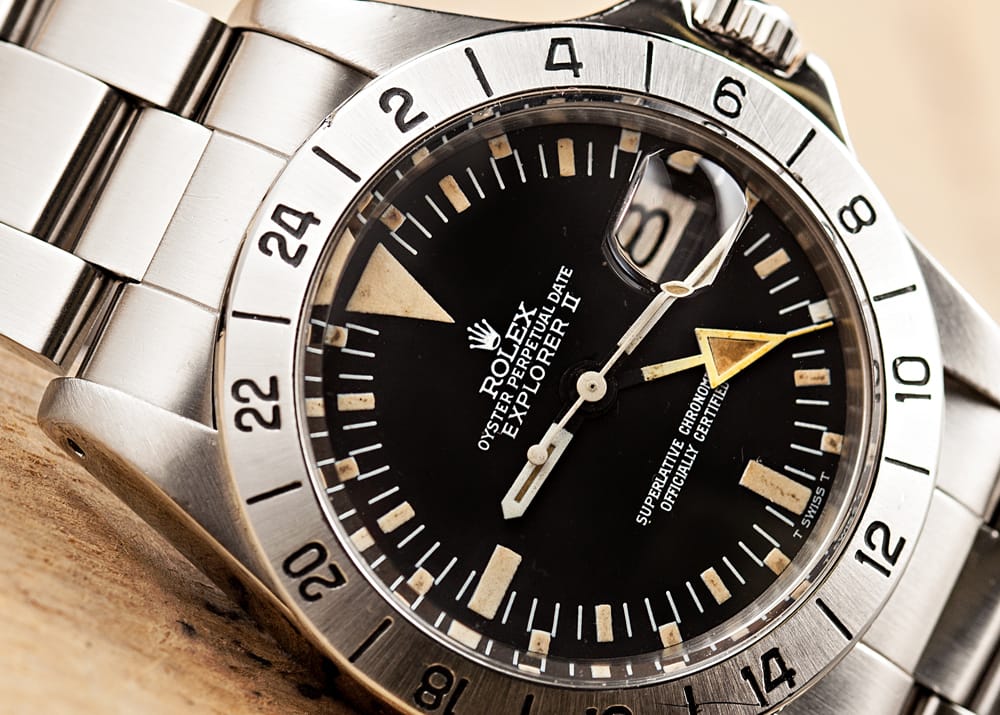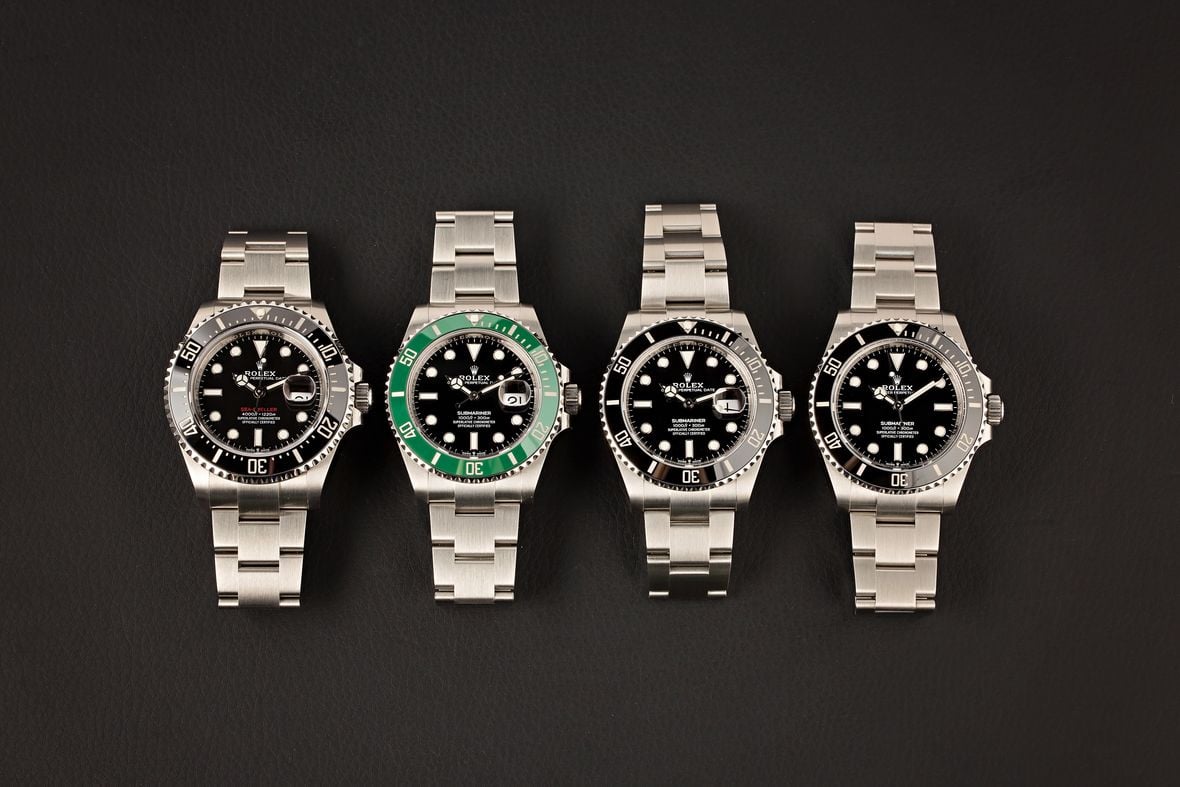A GMT watch is a sophisticated timepiece that allows you to track multiple time zones simultaneously. Originally designed for pilots in the 1950s, these luxury watches have become essential tools for global travelers and watch enthusiasts alike. GMT watches combine practicality with horological artistry, featuring additional hands or displays to indicate different time zones. Their significance in modern horology lies in their ability to seamlessly blend function and style, making them coveted pieces in the world of luxury watches.
The Origin of GMT Watches
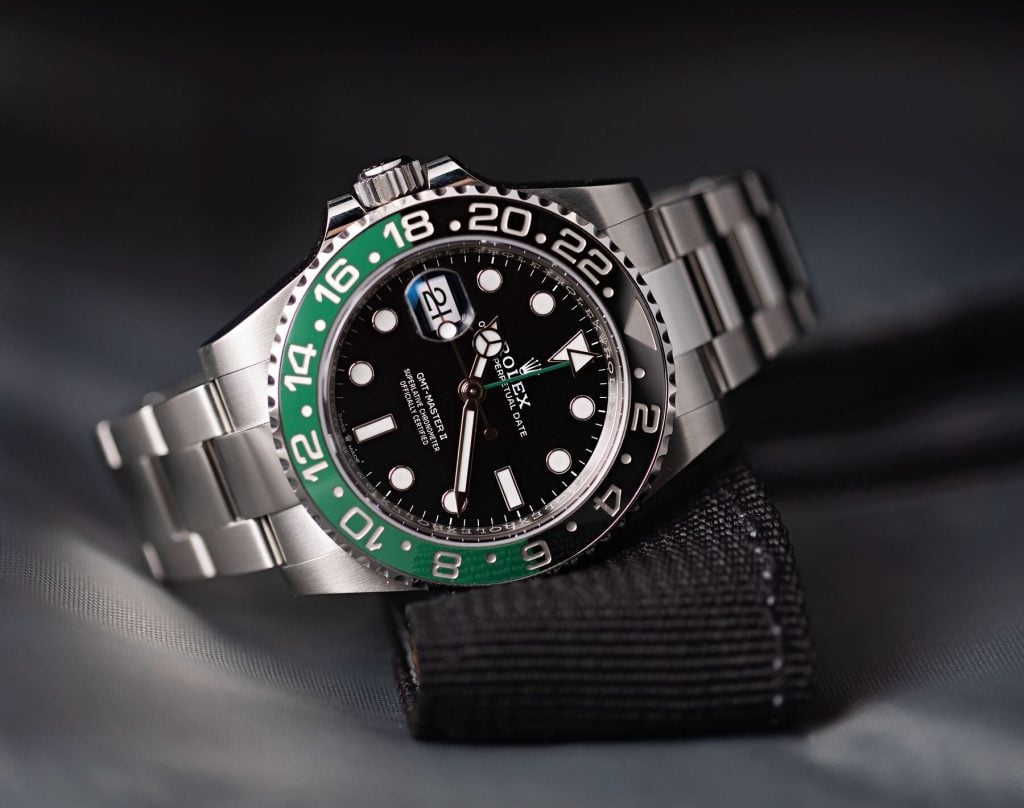
The story of GMT watches is deeply intertwined with the golden age of aviation and the rise of international travel. These timepieces emerged as a response to the growing need for pilots and travelers to keep track of multiple time zones effortlessly. The development of GMT watches marks a significant milestone in horological history, showcasing the industry’s ability to adapt to changing global needs.
Historical Background
The genesis of GMT watches can be traced back to the early 1950s when the world was becoming increasingly connected through air travel. Developed specifically to address the needs of international pilots, these timepieces were born out of necessity. The pivotal moment came in 1954 when Rolex, in collaboration with Pan Am Airways, introduced the GMT-Master. This groundbreaking watch was designed to help pilots navigate the complexities of long-haul flights and changing time zones.
The introduction of the Rolex GMT-Master in 1954 was a game-changer in the world of horology. It wasn’t just a new watch; it was a solution to a pressing problem faced by aviators. The GMT-Master allowed pilots to track both their home time and the time at their destination, making it an indispensable tool for international flight crews. This innovation set the stage for a new category of watches that would soon become essential for globe-trotters and professionals alike.
Development of GMT Timekeeping
The evolution of GMT timekeeping represents a fascinating chapter in watchmaking history. As the concept gained popularity, watchmakers began to explore various ways to incorporate dual time zone functionality into their timepieces. This period saw significant advances in watchmaking technology and design, as brands sought to create more accurate and user-friendly GMT mechanisms.
Following Rolex’s pioneering innovation, other prestigious watch brands quickly recognized the potential of GMT functionality. They began developing their own interpretations of the GMT watch, each bringing unique design elements and technical solutions to the table. This period of innovation saw GMT functions being integrated into both luxury dress watches and robust tool watches, catering to a wide range of preferences and needs.
Key Milestones and Contributors
The development of GMT watches has been marked by significant contributions from major watch brands, with Rolex and OMEGA leading the charge. These horological powerhouses pushed the boundaries of what was possible, introducing features like the 24-hour hand and the rotating bezel, which have become hallmarks of GMT watches. Their efforts laid the foundation for the diverse range of GMT watches we see today.
A crucial milestone in the evolution of GMT watches was the development of more user-friendly GMT mechanisms. Watchmakers worked tirelessly to create systems that allowed for easy adjustment of the GMT hand, making these watches more accessible to a broader audience. This focus on usability, combined with the growing recognition of GMT watches in the aviation and travel industries, cemented their status as both functional tools and desirable luxury items.
How GMT Watches Work
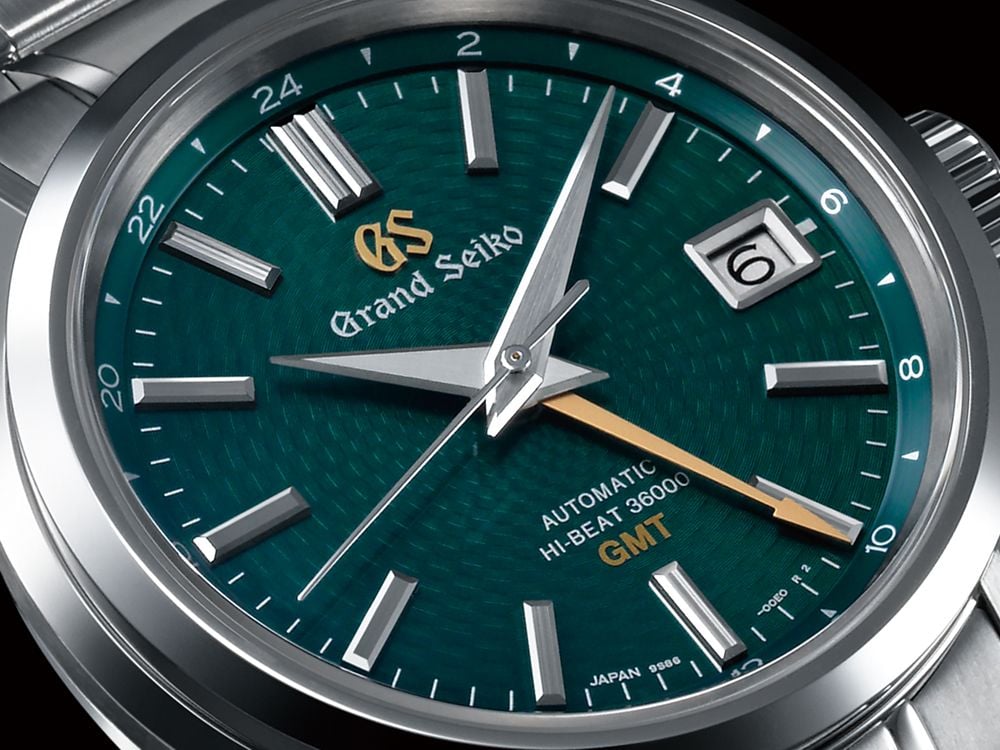
At the heart of every GMT watch lies a sophisticated mechanism that allows it to display multiple time zones simultaneously. Understanding how these watches work is key to appreciating their value and functionality. From the standard time display to the additional GMT hand and the rotating bezel, each component plays a crucial role in making these timepieces indispensable for international travelers.
Explanation of GMT Functionality
The foundation of a GMT watch is its standard time display, which functions like any other analog watch, showing the hours, minutes, and sometimes seconds in the local time zone. What sets a GMT watch apart is its additional 24-hour hand, often distinctively colored for easy reading. This hand makes one complete rotation of the dial every 24 hours, allowing you to track a second time zone at a glance.
Many GMT watches also feature rotating bezels marked with 24-hour graduations. This bezel can be turned to align with the 24-hour hand, enabling you to read a third time zone. The interplay between the standard hands, the 24-hour hand, and the rotating bezel creates a versatile system for tracking multiple time zones, making GMT watches incredibly useful for frequent travelers and international professionals.
The beauty of GMT functionality lies in its intuitive design. Once set correctly, you can read your local time from the main hands, while the 24-hour hand points to the time in your chosen second time zone. By rotating the bezel, you can quickly calculate the time in a third zone without disturbing the watch’s settings. This elegant solution to time zone tracking has made GMT watches a favorite among watch enthusiasts and global travelers alike.
Technical Mechanics Behind the GMT Complication
The GMT complication is a testament to the ingenuity of watchmakers. At its core, it relies on a modified movement that drives an additional hand around the dial once every 24 hours. This is typically achieved by adding an extra gear train to the standard movement, connected to the main timekeeping wheels but rotating at half the speed of the hour hand.
The key to a GMT watch’s functionality is the ability to set the 24-hour hand independently of the main hour hand. This is accomplished through a modified crown mechanism that allows for separate adjustment of the GMT hand. In more advanced models, the main hour hand can be adjusted forward or backward in one-hour increments without affecting the minute hand or seconds hand, a feature particularly useful when changing time zones.
The rotating bezel, when present, is not directly connected to the movement but plays a crucial role in the watch’s functionality. It’s typically bidirectional and clicks into place at each hour marker, ensuring accurate alignment for time zone calculations. The precision engineering required to create a smooth yet secure rotating bezel is a hallmark of high-quality GMT watches.
Examples of GMT Watch Mechanisms
There are several approaches to GMT mechanisms in the world of luxury watches. The Rolex Caliber 3285, used in the GMT-Master II, is often considered the gold standard. It features a “jumping” hour hand that can be set independently in one-hour increments, allowing for easy time zone changes without stopping the watch.
Another notable example is the Caliber 8605, found in some OMEGA Planet Ocean models that include the GMT function. This movement features a independently adjustable hour hand and a 24-hour hand, offering flexibility in time zone settings. Some brands, like Grand Seiko, use a “true GMT” movement where the GMT hand is independently adjustable, while the main hour hand remains fixed.
Different Types of GMT Watches
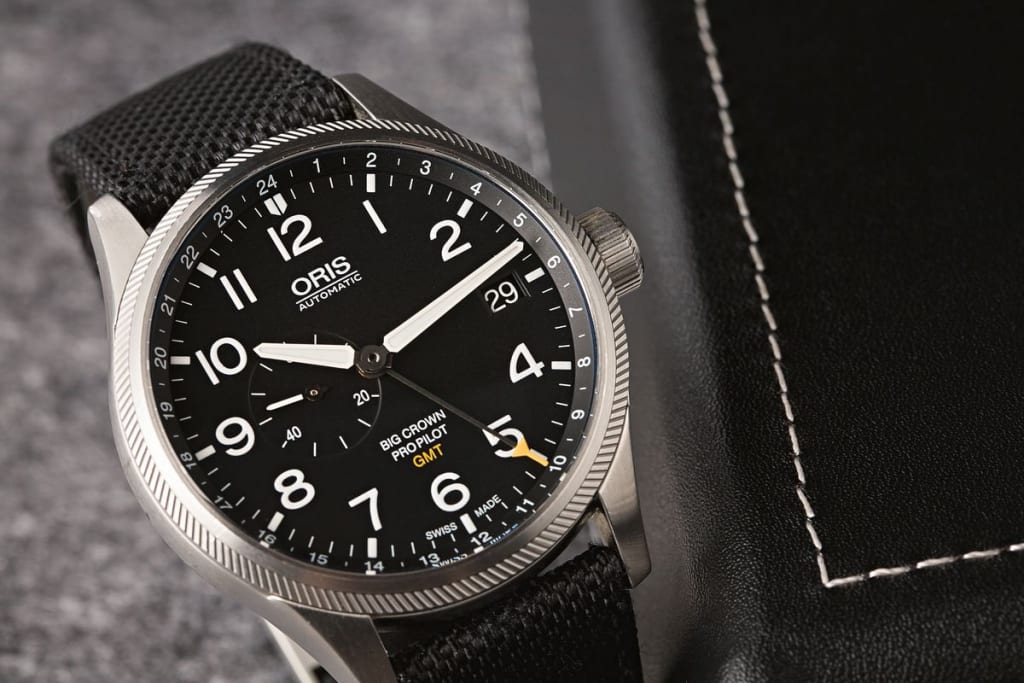
The world of GMT watches is diverse, offering a range of functionalities to suit different needs and preferences. From the classic two-time zone display to more complex multi-time zone systems, GMT watches come in various configurations. Understanding the different types can help you choose the perfect GMT watch for your lifestyle.
True GMT vs. Office GMT
When exploring GMT watches, you’ll often encounter the terms “True GMT” and “Office GMT.” These designations refer to the specific functionality of the watch’s GMT feature. A True GMT watch allows for independent adjustment of the hour hand, making it ideal for frequent travelers who regularly switch time zones. This feature enables you to change the local time without affecting the GMT hand or minute hand, maintaining accurate timekeeping across all displayed zones.
On the other hand, an Office GMT, also known as a “Caller GMT,” has a independently adjustable 24-hour hand. This type is perfect for those who primarily stay in one time zone but need to track a second time zone, such as international business professionals who frequently communicate with overseas colleagues. While both types have their merits, True GMTs are generally considered more versatile for travelers, while Office GMTs offer simplicity for those who mainly need to reference a second time zone from their home base.
Popular GMT Watch Brands and Models
The GMT watch market is dominated by several prestigious brands, each offering their unique take on this functional complication. Rolex, the pioneer of GMT watches, remains a leader with its iconic GMT-Master II line. These watches are renowned for their reliability, precision, and distinctive “Pepsi” and “Batman” bezels, named for their color schemes.
OMEGA’s contribution to the GMT world comes in the form of their Seamaster Planet Ocean GMT models. These watches combine the brand’s renowned diving watch capabilities with GMT functionality, offering a versatile timepiece for both underwater explorers and global travelers. OMEGA’s Co-Axial escapement technology adds an extra layer of precision to these already impressive timepieces.
Patek Philippe brings its signature elegance to GMT watches with models like the Calatrava Travel Time. These watches offer a more understated approach to GMT functionality, often featuring a second hour hand that can be hidden when not in use. The combination of Patek’s exquisite craftsmanship and practical GMT function makes these watches highly sought after by collectors.
Known for its impeccable finishing and innovative technology, Grand Seiko offers GMT watches that showcase the brand’s Spring Drive movement. Models like the SBGE201 combine the smooth sweep of Spring Drive with precise GMT functionality, wrapped in Grand Seiko’s distinctive angular case designs. These watches offer a compelling alternative to their Swiss counterparts, with a unique aesthetic and unparalleled accuracy.
Uses and Benefits of a GMT Watch
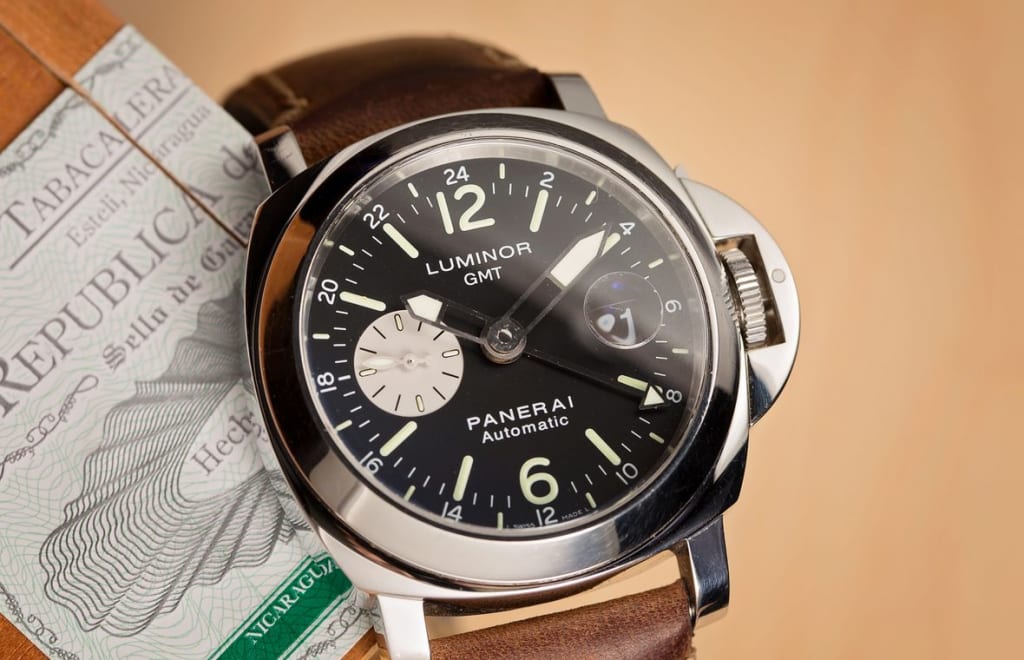
GMT watches are more than just beautiful timepieces; they’re functional tools designed to simplify life for frequent travelers and international professionals. The ability to track multiple time zones at a glance makes these watches invaluable for those who regularly cross borders or communicate across continents. Whether you’re a pilot navigating long-haul flights or a business executive coordinating global teams, a GMT watch can be an indispensable companion.
In daily life, GMT watches offer benefits that extend beyond travel. They allow you to easily keep track of the time in different parts of the world, which can be crucial for scheduling international calls or following global events. For those with family or business interests abroad, a quick glance at your wrist can tell you whether it’s an appropriate time to make contact, eliminating the need for mental calculations or time zone apps.
From a professional standpoint, GMT watches enhance time management and showcase attention to detail. In fields where precision and global awareness are valued, wearing a GMT watch can be a subtle statement of your international outlook and organizational skills. Moreover, the combination of functionality and luxury that these timepieces offer makes them versatile enough to transition seamlessly from boardroom meetings to social events, embodying the spirit of the modern, connected world.
Iconic GMT Watch Models
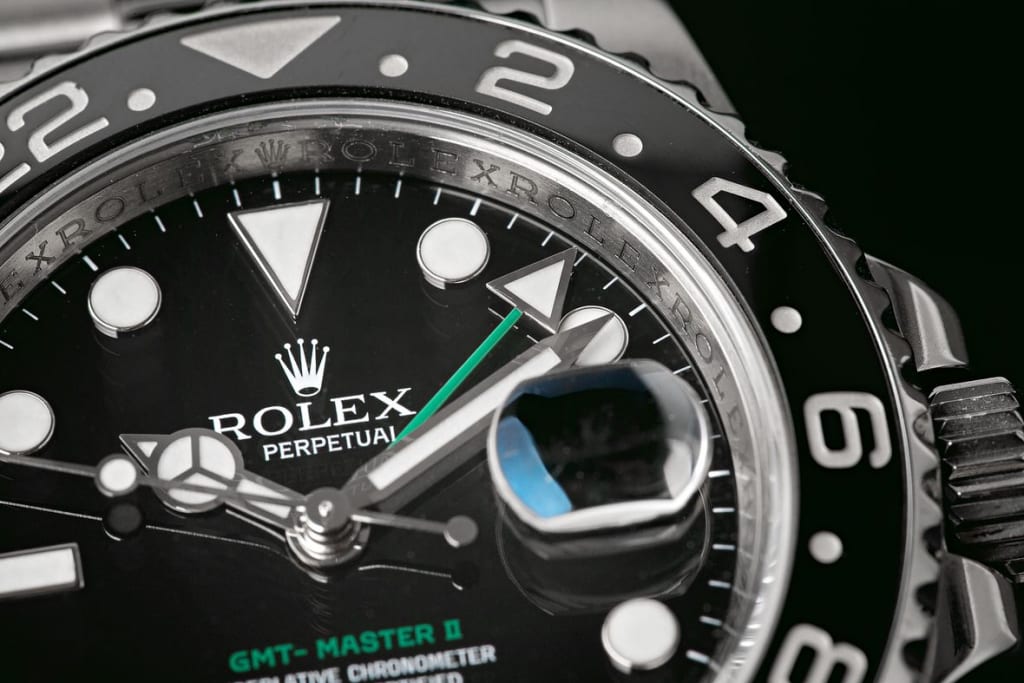
The world of GMT watches is rich with iconic models that have left an indelible mark on horological history. These timepieces not only serve a practical purpose but have also become symbols of adventure, luxury, and precision engineering. From tool watches born out of necessity to haute horlogerie masterpieces, GMT watches have evolved to suit a wide range of tastes and needs.
Detailed Overview of Significant Models
The Rolex GMT-Master II stands as the quintessential GMT watch, building on the legacy of the original GMT-Master. Its distinctive bi-color bezel, available in combinations like the blue and red Rolex Pepsi or the blue and black Rolex Batman, has become instantly recognizable. The latest models feature Rolex’s proprietary Cerachrom bezel, known for its scratch resistance and color longevity.
OMEGA’s contribution to the GMT pantheon comes in the form of the Seamaster Planet Ocean GMT. This watch combines OMEGA’s diving heritage with GMT functionality, resulting in a versatile timepiece suitable for both underwater exploration and international travel. The Planet Ocean GMT features an independently adjustable hour hand, allowing for easy time zone changes without stopping the watch.
Design Features and Unique Attributes
Each iconic GMT model brings its own unique design elements to the table. The Rolex GMT-Master II, for instance, is known for its robust Oyster case and the cyclops lens over the date window, enhancing readability. The watch’s Triplock crown system ensures water resistance, making it suitable for a variety of environments.
Patek Philippe’s World Time watches take a different approach to displaying multiple time zones. Instead of a traditional GMT hand, these watches feature a rotating 24-hour ring that displays the time in 24 cities simultaneously. This innovative system, combined with Patek’s exquisite finishing, creates a watch that’s both a technical marvel and a work of art.
Historical Significance and Modern Interpretations
The historical significance of GMT watches cannot be overstated. The original Rolex GMT-Master, developed in collaboration with Pan Am Airways, was a response to the needs of the burgeoning long-haul flight industry. It quickly became the watch of choice for pilots and travelers alike, cementing its place in aviation history.
Modern interpretations of GMT watches continue to push boundaries while respecting their heritage. Grand Seiko’s GMT models, for example, incorporate the brand’s innovative Spring Drive movement, offering unparalleled accuracy in a GMT watch. Meanwhile, brands like Tudor have introduced more accessible GMT models, bringing this useful complication to a wider audience without compromising on quality or style.
How to Use a GMT Watch
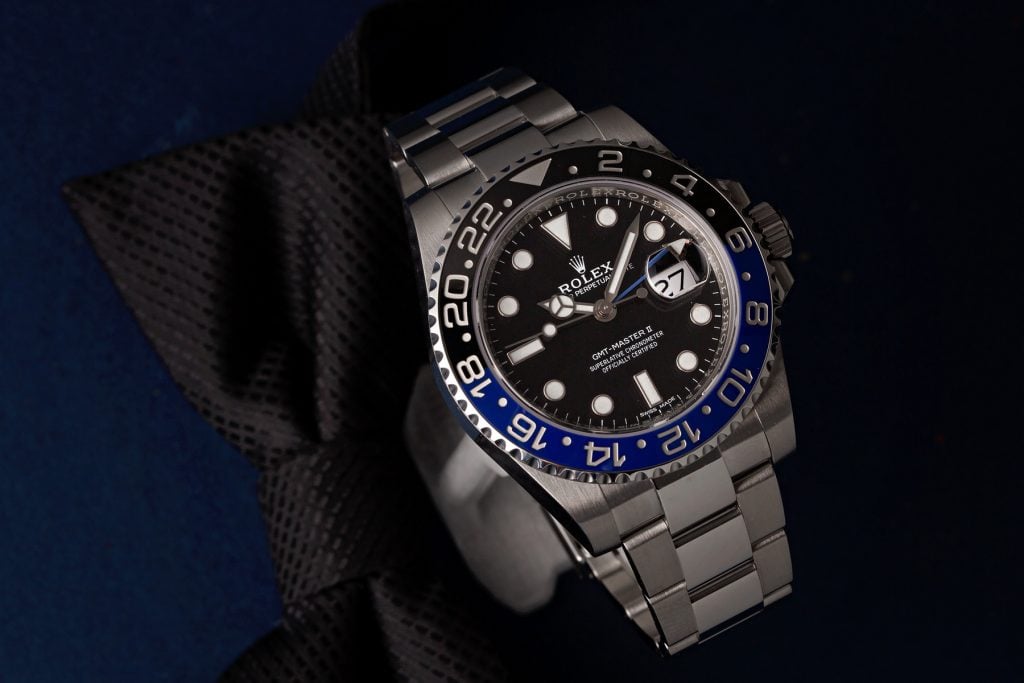
Mastering the use of a GMT watch opens up a world of convenience for international travelers and those who frequently work across time zones. While these timepieces may seem complex at first glance, their operation is quite intuitive once you understand the basics. Let’s explore how to set and use a GMT watch effectively, ensuring you get the most out of this sophisticated timekeeping tool.
Setting the local time and GMT hand is the first step in using your GMT watch. Start by unscrewing the crown (if applicable) and pulling it out to the first position. This usually allows you to set the date. Move to the second position to set the main hour and minute hands to your local time. The final position often controls the GMT hand. Set this to your desired second time zone, typically your home time if you’re traveling.
Using the rotating bezel for time zone calculations adds another layer of functionality to your GMT watch. Once your watch is set, you can use the bezel to track a third time zone. Simply rotate the bezel until the desired time zone’s hour marker aligns with the GMT hand. Now you can read the time in this third zone directly from the bezel, while still tracking your local time and the time set on the GMT hand.
To maximize your GMT watch’s functionality, consider these practical tips: Always set your watch’s main time to the local time of your current location for easy day-to-day use. Use the GMT hand to track your home time or the time zone you most frequently need to reference. Remember that the GMT hand makes a full rotation every 24 hours, so pay attention to whether it’s indicating AM or PM. With practice, reading multiple time zones will become second nature, making your GMT watch an invaluable tool in your travels and daily life.
Buying Guide for GMT Watches
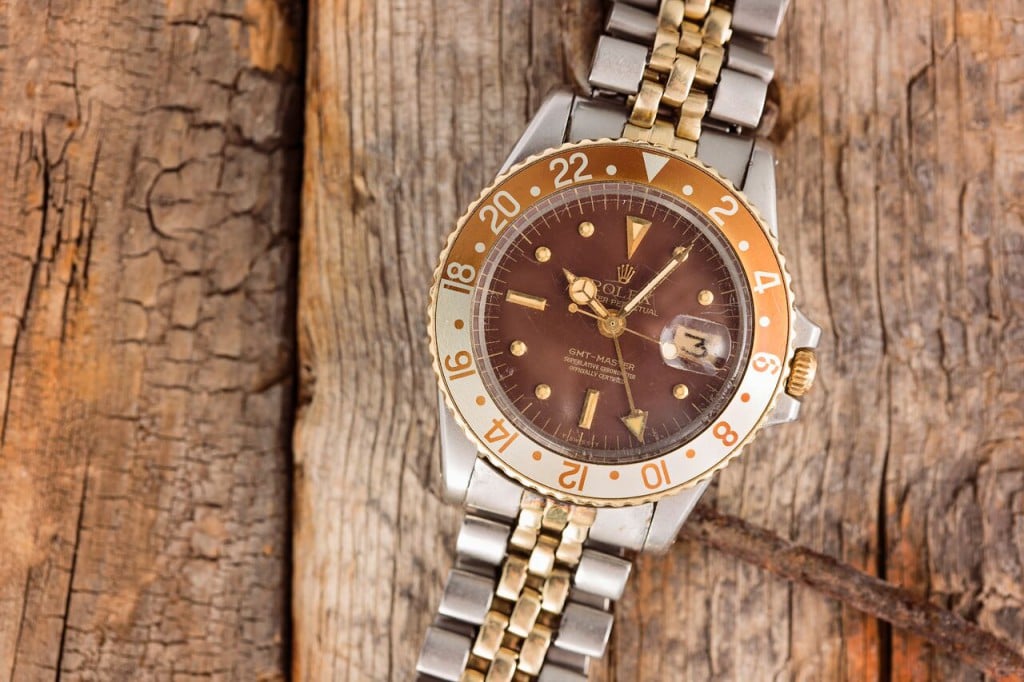
Investing in a GMT watch is a decision that combines practicality with luxury. These sophisticated timepieces offer functionality that goes beyond mere timekeeping, making them valuable companions for frequent travelers and watch enthusiasts alike. When considering the purchase of a GMT watch, there are several factors to keep in mind to ensure you select the perfect timepiece for your needs and preferences.
Factors to Consider When Buying a GMT Watch
When shopping for a GMT watch, one of the primary considerations is the type of movement. Automatic movements are prized by watch enthusiasts for their craftsmanship and the smooth sweep of the second hand. They don’t require batteries but do need to be worn regularly or placed on a watch winder to maintain accuracy. Quartz movements, on the other hand, offer exceptional accuracy and require less maintenance, making them a practical choice for those who prefer a “set it and forget it” approach.
Brand reputation and history play a significant role in the world of luxury watches. Established brands like Rolex, OMEGA, and Patek Philippe have long histories of producing high-quality GMT watches and often hold their value well. However, don’t overlook newer brands or those less associated with GMT complications, as they may offer innovative designs or better value for money. Research the brand’s heritage, their approach to watchmaking, and their after-sales service to make an informed decision.
Design and durability are crucial factors that will affect your long-term satisfaction with your GMT watch. Consider the watch’s water resistance, especially if you plan to wear it while swimming or diving. The case material (stainless steel, titanium, gold, etc.) affects both the watch’s appearance and its resilience to daily wear. Pay attention to the legibility of the dial, particularly how easy it is to distinguish between the main time and the GMT indication. Finally, consider the watch’s size and how it fits your wrist – a watch that’s comfortable to wear is one you’ll enjoy for years to come.
Price Range and Market Value
GMT watches span a wide range of price points, reflecting differences in brand prestige, materials, complications, and craftsmanship. Entry-level GMT watches from reputable brands can start around $1,000 to $3,000. These often feature reliable movements and good build quality, making them excellent choices for those new to luxury watches or seeking a practical travel companion.
Mid-range GMT watches, typically priced between $3,000 and $10,000, offer enhanced features, more refined movements, and often come from well-established luxury brands. In this category, you’ll find watches with improved materials, higher water resistance, and more complex GMT mechanisms. Many of these watches strike a balance between prestige and value, making them popular among enthusiasts and professionals alike.
At the high end of the market, GMT watches can command prices from $10,000 to well over $100,000. These luxury timepieces often feature precious metals, in-house movements with additional complications, and exquisite finishing. Brands like Patek Philippe, Audemars Piguet, and high-end models from Rolex fall into this category. While the price tag is significant, these watches often retain their value well and can be considered investments in addition to functional timepieces.
Recommended GMT Watches for Various Budgets
For those looking to enter the world of GMT watches without breaking the bank, consider options like the Hamilton Jazzmaster GMT Auto or the Tissot Chemin des Tourelles GMT. These Swiss-made watches offer reliable GMT functionality and attractive designs at accessible price points, typically under $2,000.
In the mid-range category, the Tudor Black Bay GMT presents an excellent value proposition. It offers similar functionality to its more expensive Rolex cousin at a fraction of the price, while maintaining high-quality construction and a respected brand name. Another strong contender is the OMEGA Seamaster Planet Ocean GMT, which combines robust build quality with sophisticated styling.
For those with larger budgets seeking the pinnacle of GMT watchmaking, the Rolex GMT-Master II remains the gold standard. Its iconic design, reliable movement, and strong resale value make it a perennial favorite among watch enthusiasts and collectors.
For a different approach to multi-timezone watches, look to the Patek Philippe Complications collection. Their World Time model offers a stunning alternative, displaying the time in 24 zones simultaneously. This exquisite timepiece showcases Patek’s renowned craftsmanship in a beautifully designed package, perfect for the discerning collector.
Maintenance and Care for GMT Watches
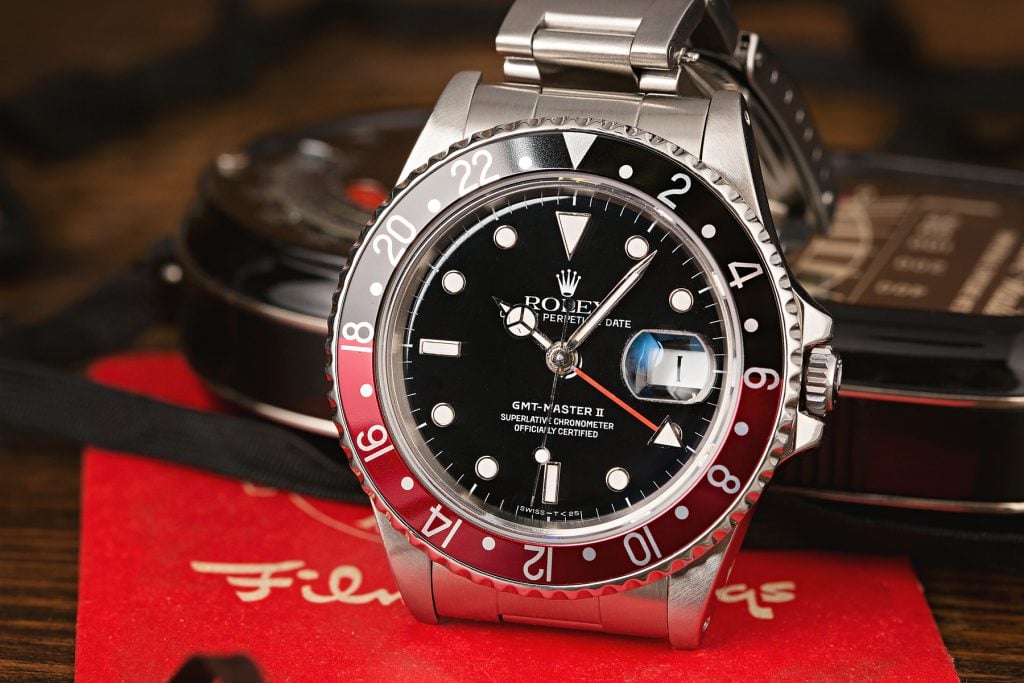
Proper maintenance and care are crucial for ensuring the longevity and accuracy of your GMT watch. These sophisticated timepieces, with their additional complications, require attention to detail in their upkeep. By following some routine maintenance tips and being aware of common issues, you can keep your GMT watch in excellent condition for years to come.
Regular cleaning is essential for maintaining your GMT watch. Use a soft, lint-free cloth to gently wipe the case, crystal, and bracelet or strap. For metal bracelets, occasional cleaning with mild soap and water can help remove accumulated dirt and sweat. Be sure to rinse thoroughly and dry completely. If your watch is water-resistant, consider giving it a rinse under running water every few months to prevent salt and debris buildup, especially if worn in marine environments.
Pay special attention to the rotating bezel if your GMT watch features one. Ensure it moves smoothly and clicks into place properly. If you notice any stiffness or irregularity in its movement, it may be time for a professional cleaning. For automatic GMT watches, consider using a watch winder if you don’t wear the watch daily. This helps maintain the power reserve and keeps the movement running smoothly.
When it comes to professional servicing, most luxury watch manufacturers recommend a full service every 5-10 years, depending on the model and usage. This typically involves disassembling the watch, cleaning and lubricating the movement, replacing worn parts, and ensuring water resistance. While it can be tempting to extend the interval between services, regular maintenance by certified professionals can prevent more serious issues and maintain the watch’s accuracy and value over time.
Future Trends in GMT Watches
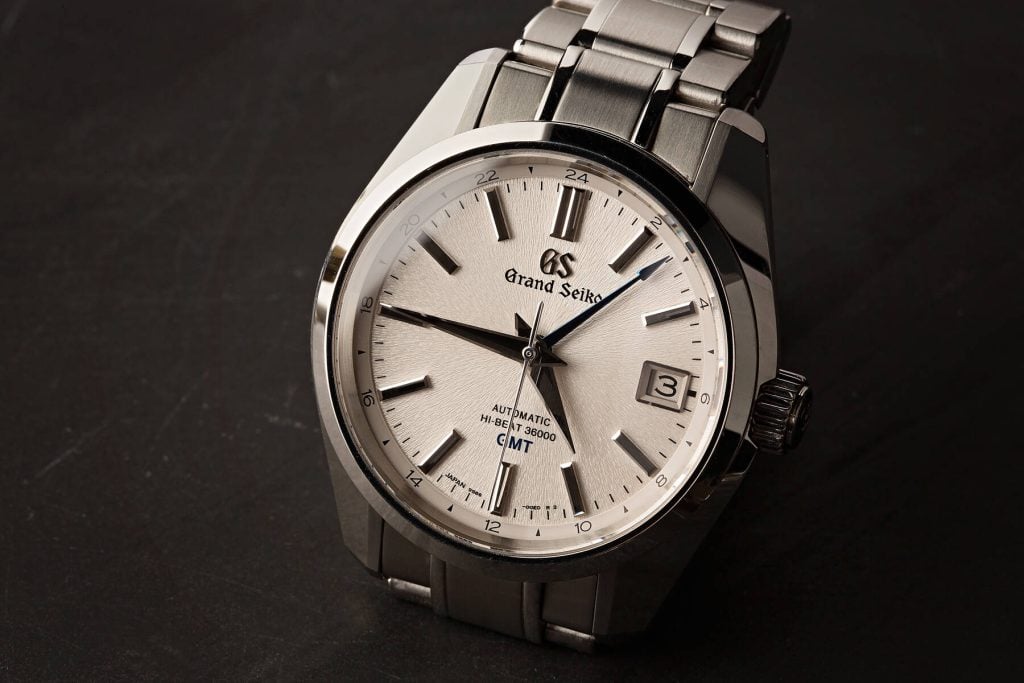
The world of GMT watches continues to evolve, driven by advancements in technology, changing consumer preferences, and the ever-present desire for innovation in the luxury watch industry. As we look to the future, several exciting trends are emerging that promise to shape the next generation of GMT timepieces.
One of the most significant innovations in GMT watch technology is the development of more user-friendly and accurate movements. Manufacturers are focusing on creating mechanisms that allow for easier adjustment of multiple time zones without compromising precision. We’re seeing the emergence of movements that allow independent adjustment of the hour hand in one-hour increments, making it simpler for travelers to adapt to new time zones quickly. Additionally, the integration of high-tech materials like silicon in watch movements is improving magnetic resistance and overall reliability.
Emerging brands are making their mark in the GMT watch market, challenging established players with fresh designs and innovative features. Microbrands, in particular, are gaining traction by offering unique GMT watches at competitive prices. These newcomers often bring a different aesthetic to the table, experimenting with case materials, dial designs, and color combinations that diverge from traditional GMT watch styling. This influx of new ideas is pushing the entire industry to rethink what a GMT watch can be.
Looking ahead, we can expect to see GMT watches that blend traditional mechanical craftsmanship with modern technology. The concept of the “connected” GMT watch is gaining traction, where mechanical movements are complemented by smart features like automatic time zone detection and syncing. However, the core appeal of a beautifully crafted mechanical GMT watch is likely to endure, with brands focusing on refining the user experience and improving durability and accuracy.
As global travel continues to evolve, so too will GMT watches. We may see the development of watches capable of displaying even more time zones simultaneously, catering to an increasingly interconnected world. There’s also a growing emphasis on sustainability in the watch industry, which could lead to more GMT watches made from recycled materials or with eco-friendly production methods. Whatever the future holds, GMT watches will undoubtedly continue to be prized possessions for travelers, professionals, and watch enthusiasts alike.
Conclusion
As we’ve explored the fascinating world of GMT watches, it’s clear that these timepieces are much more than mere tools for tracking multiple time zones. They represent a perfect fusion of functionality and luxury, embodying the spirit of global travel and international business. From their origins in the golden age of aviation to their current status as coveted luxury items, GMT watches have continually evolved to meet the needs of an increasingly connected world.
The enduring appeal of GMT watches lies in their ability to combine practical utility with horological artistry. Whether you’re a frequent flyer, a business professional working across time zones, or simply a watch enthusiast who appreciates fine craftsmanship, a GMT watch offers something special. The variety of styles, price points, and complications available means there’s a GMT watch to suit every taste and budget.
At Bob’s Watches, we’re passionate about connecting watch lovers with their perfect timepiece. Our extensive collection of pre-owned luxury watches includes a wide range of GMT models from prestigious brands. Whether you’re in the market for an iconic Rolex GMT-Master II or looking to explore other high-end GMT options, we invite you to browse our selection of luxury watches for sale. Our team of experts is always ready to help you find the GMT watch that perfectly balances your needs for functionality, style, and investment potential.


